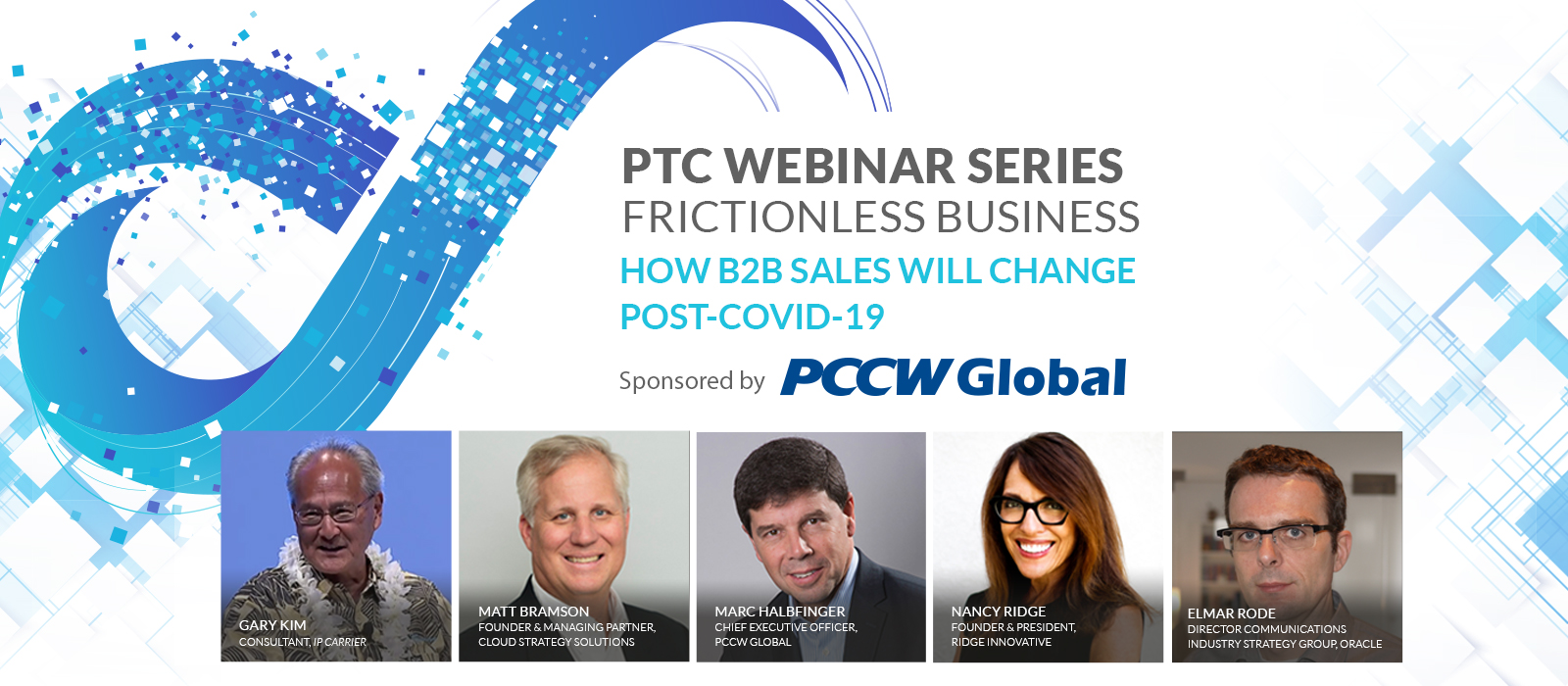
In the past, enterprise sales have largely relied on field sales, but change is happening. Perhaps a third of business-to-business buyers might be willing to conduct fully-virtual transactions for new products up to a value of approximately USD 500,000, according to a McKinsey report.
And marketplaces, ecosystems, and platforms can make a huge difference. PCCW Global, using an automated system for sales to settlements, “gained over 800 customers in the last 18 months, with growing traction, without any actual sales contact,” Halbfinger said.
“We don’t even have to know who the customer is,” he added. Sales come from third parties or online, direct from the trading platform PCCW Global uses.
B2B sales have evolved as virtual marketing, sales, fulfillment, and settlement evolve using artificial intelligence and other digital tools. Those themes, and many more, were featured in a PTC Webinar Series: Frictionless Business on How B2B Sales Will Change Post-COVID-19.
Featured panelists included:
- Matt Bramson, Founder & Managing Partner, Cloud Strategy Solutions
- Marc Halbfinger, Chief Executive Officer, PCCW Global
- Nancy Ridge, Founder & President, Ridge Innovative
- Elmar Rode, Director Communications Industry Strategy Group, Oracle
Even before the COVID-19 pandemic made virtual capabilities vital, B2B sales journeys had changed. “Sixty percent of buyers have already made up their minds before first contact with sales personnel,” noted Rode.
That process arguably accelerated during the pandemic with a “huge shift to digital buying and selling, overnight,” said Ridge.
“Expectations have changed,” said Rode. “Chatbot interactions now are perfectly acceptable,” for example.
Human interaction and sales skill still matters, but digital tools have advantages, said Bramson. Virtual video sales calls that can be recorded can demystify the process, he noted. Sales personnel interactions with prospects now are transparent and visible, giving managers a “front row seat” into the sales process without feedback filtering.
Organizational culture and sales skills – not simply technology – will matter as research, ordering, provisioning, and settlement go digital.
High-performing sales personnel will need to adapt and learn new skills, said Halbfinger. The advice to “act as consultants” is not new. It has been common for decades in the information technology and communications business. But sales personnel will really have to learn to behave that way now. Some will not be able to adapt. “The good ones will,” Halbfinger said.
“Easy and convenient” is also key. For example, B2B customers now expect they can buy as easily as they buy everything else, Rode added. So consumer experiences now have to be supported for B2B as well. The attitude is that “if I need something, I buy it,” Rode noted.
“How business gets done has changed,” said Bramson. “There is more buyer appetite for innovations.”
“And there is more need to add value for users,” Rode added.
“Among the ways new value can be created is to focus on ecosystems and communities of interest,” said Halbfinger. Empathy still matters. Face-to-face contact is still necessary.
“Technology is changing the process,” noted Halbfinger. The key is disruption, not destruction, he added; value for users and sellers, said Ridge; algorithms but also the continued importance of non-rational buying behavior; value added by partners and customers, Rode said.
View the July webinar “How B2B Sales Will Change Post-COVID-19” here:
Mark your calendar for next month’s webinar “Communications Infrastructure – Current Viewpoints” on Wednesday,18 August 2021 at 14:00 Hawaii Standard Time.
To learn more about the upcoming PTC Webinar Series, visit https://www.ptc.org/ptc-webinar-series/#upcoming.







